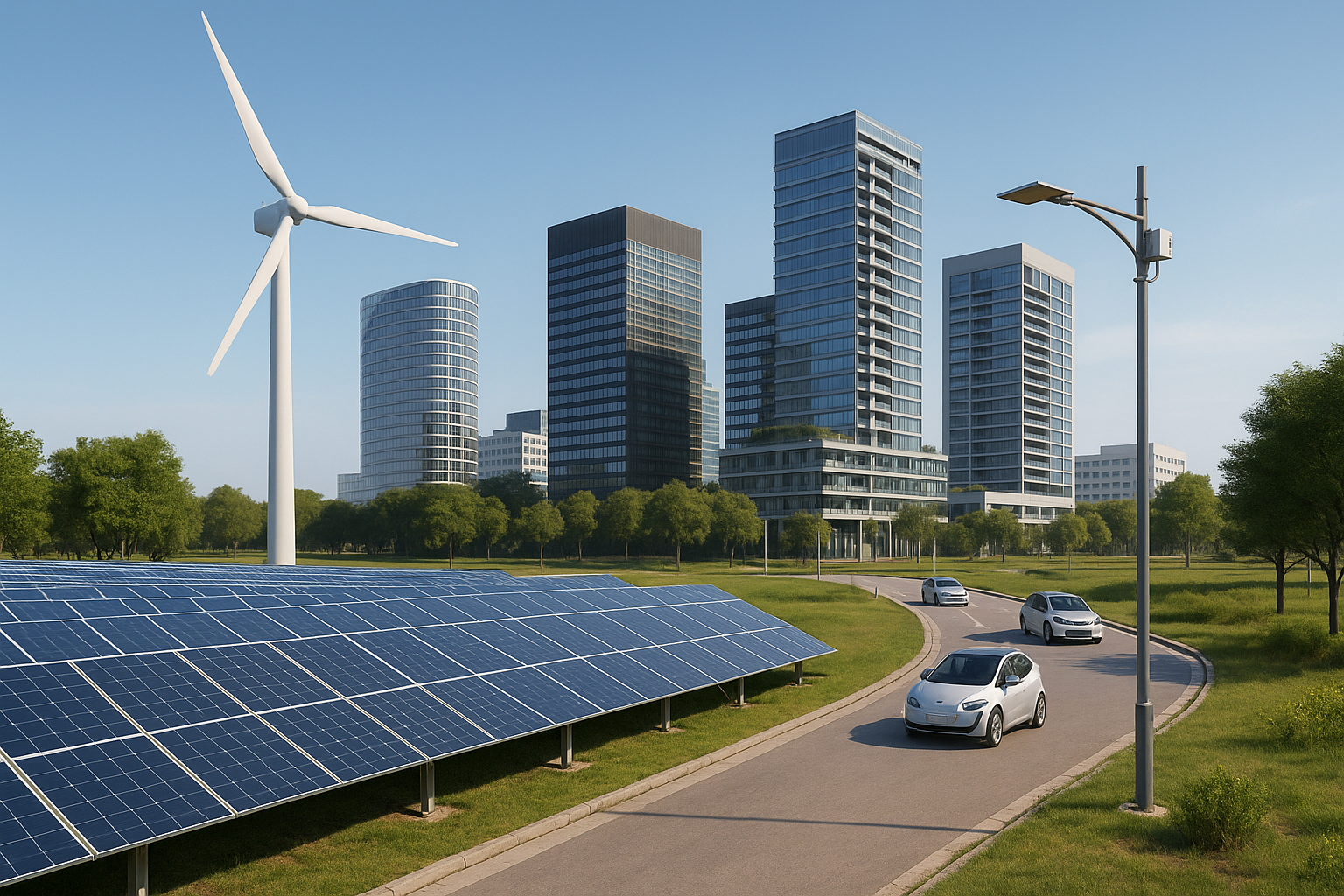Cyber-physical systems pave way for self-sufficient energy-neutral neighborhoods
Cyber-physical systems in this context are engineered to be fully autonomous. They consist of physical infrastructure, embedded sensors, and intelligent computational components that interact in real time. Unlike traditional digital systems, autonomous CPS are capable of monitoring their environment, learning from data, adapting behaviors, and executing control decisions without human intervention.

Researchers have outlined a strategic blueprint to harness artificial intelligence and cyber-physical systems for the development of smart Positive Energy Districts (PEDs). As urban environments face growing pressure from climate change, energy demands, and population density, the integration of autonomous digital infrastructure is emerging as a viable solution to build future-ready cities. A new study published in Applied Sciences proposes a comprehensive framework to advance this vision, placing cyber-physical autonomy at the core of sustainable urban energy management.
The study, titled "Autonomous Cyber-Physical Systems Enabling Smart Positive Energy Districts," presents a conceptual model designed to align with the European Union's climate goals and the broader objectives of the European Green Deal.
What role will cyber-physical systems play in urban energy transformation?
The study explores the transformative role of autonomous cyber-physical systems (CPS) in constructing Positive Energy Districts, neighborhoods that generate more renewable energy than they consume. These districts are expected to operate as localized, self-sufficient energy ecosystems, integrating smart buildings, electric mobility, and distributed energy systems, all managed by interconnected digital platforms.
Cyber-physical systems in this context are engineered to be fully autonomous. They consist of physical infrastructure, embedded sensors, and intelligent computational components that interact in real time. Unlike traditional digital systems, autonomous CPS are capable of monitoring their environment, learning from data, adapting behaviors, and executing control decisions without human intervention.
The proposed framework consists of multiple interactive layers. At the foundation is the physical layer, encompassing renewable energy installations, electric grids, and smart appliances. The communication layer connects these assets through the Internet of Things (IoT), enabling continuous data flow. Above this, the cyber layer processes information using AI algorithms to forecast demand, optimize energy usage, and maintain stability. The final tier is the human interaction layer, where citizens, utility operators, and planners can engage with the system through user interfaces.
This architecture, the study argues, allows PEDs to dynamically balance energy generation and consumption, shifting from centralized energy planning to decentralized, intelligent operations. The integration of digital twins, virtual simulations of real-world energy systems, further enhances predictive capabilities, allowing for proactive rather than reactive management.
What opportunities and challenges are shaping the adoption of smart PEDs?
The study highlights a complex landscape of opportunities and challenges that must be navigated for smart PEDs to succeed. Among the most compelling benefits is the potential for significant reductions in greenhouse gas emissions. By localizing energy production and consumption, PEDs minimize transmission losses and promote renewable energy usage at scale. They also offer resilience against grid disruptions and energy price volatility, which is increasingly relevant amid geopolitical and climatic uncertainties.
Furthermore, the integration of CPS into urban districts is expected to promote cross-sector collaboration, involving energy providers, municipal governments, technology developers, and residents. This inclusive model aligns with participatory governance, where citizens not only benefit from but also contribute to energy efficiency goals.
However, the implementation of such systems is not without barriers. A key concern is interoperability. Cities today rely on fragmented technologies and proprietary platforms, which limit seamless integration. Without open standards and regulatory alignment, autonomous systems may remain siloed and inefficient.
Another critical issue is cybersecurity. As cities become digitized and connected, they also become vulnerable to cyber threats. CPS systems controlling energy flows, building functions, and public infrastructure must be fortified against attacks that could cripple entire districts.
Cost is a further limiting factor. The high initial investment required for smart infrastructure, sensors, data analytics platforms, and workforce training poses a challenge, especially for less affluent municipalities. The study notes the need for coordinated funding mechanisms and public-private partnerships to bridge the financial gap.
Equally important is the human dimension. The success of PEDs depends on citizen engagement and behavioral change. If residents do not trust or adopt smart technologies, the systems will not deliver their full potential. Hence, transparency, ethical data governance, and education are essential components of the transition.
How can policymakers and urban planners leverage this framework?
The research offers actionable recommendations for policymakers, urban developers, and EU climate strategists. It calls for a regulatory ecosystem that facilitates experimentation through pilot zones and sandboxes. These controlled environments would allow municipalities to test autonomous CPS solutions without the constraints of full-scale deployment.
Secondly, the study advocates for the development of open-source platforms and common standards. This would ensure interoperability, reduce vendor lock-in, and accelerate innovation. Inter-institutional collaboration across national borders would also help establish best practices and scalable models.
Third, investment in digital skills and technical training is identified as a foundational requirement. Cities must build capacity among engineers, planners, and administrators to manage and optimize cyber-physical infrastructure. The researchers urge educational institutions to integrate CPS concepts into STEM curricula and vocational training.
Next up, the proposed framework underscores the importance of integrating citizens into the design and governance of PEDs. By fostering awareness and co-creation, cities can improve public trust, increase technology adoption, and build inclusive urban energy systems.
This approach resonates with broader European policies emphasizing not only technological advancement but also social cohesion, environmental justice, and democratic participation.
- FIRST PUBLISHED IN:
- Devdiscourse










